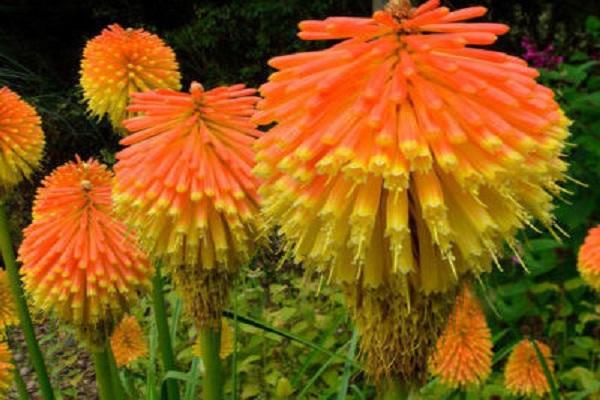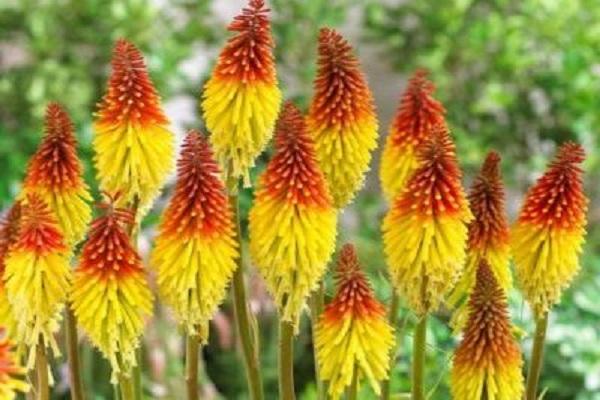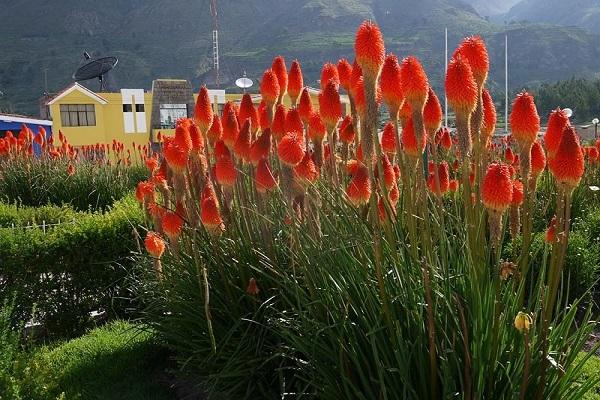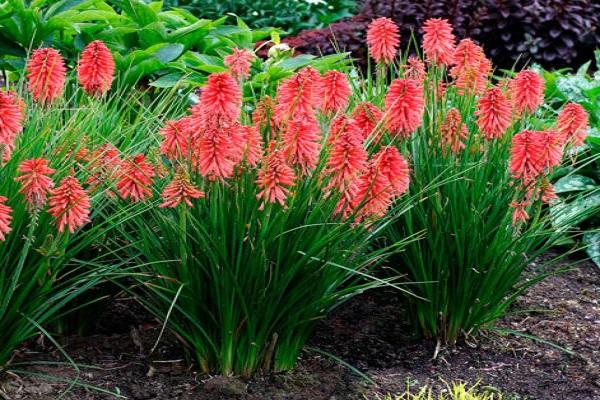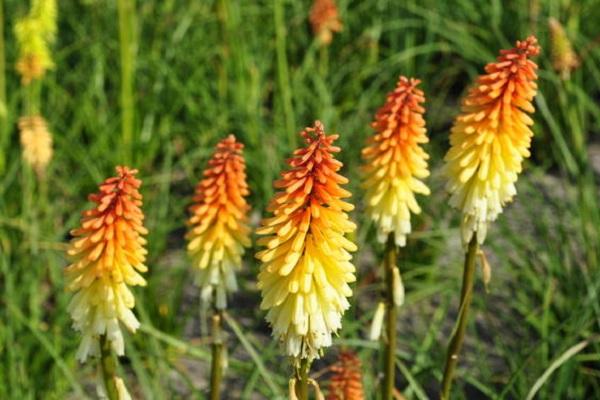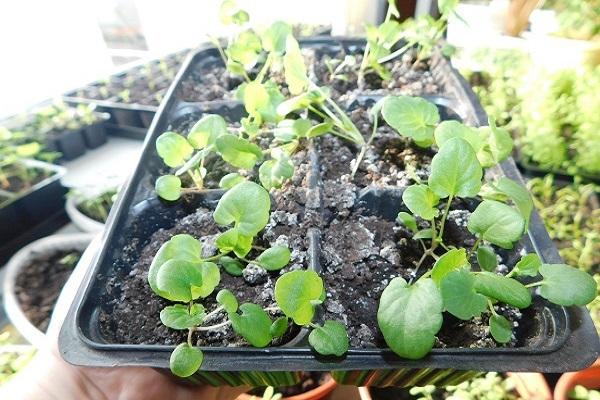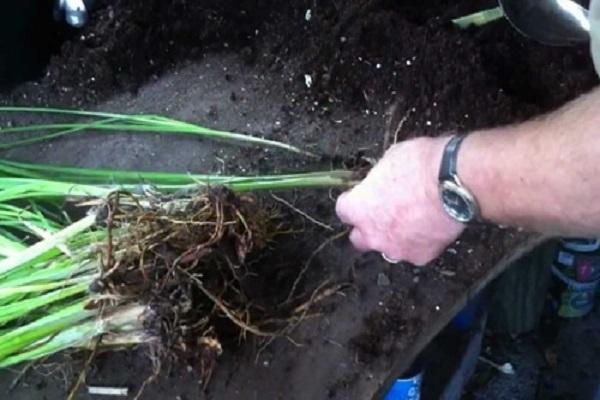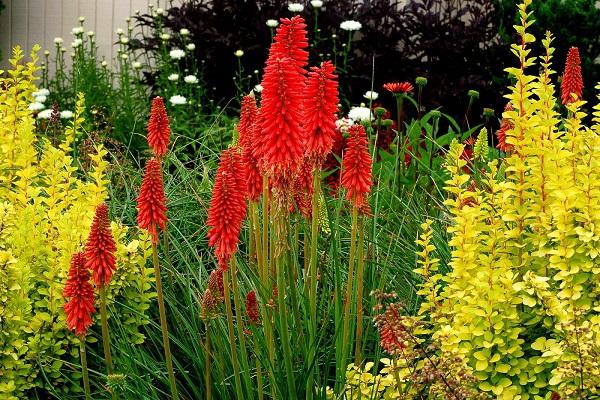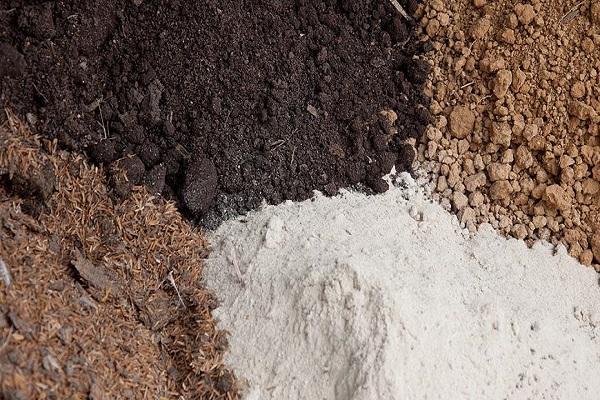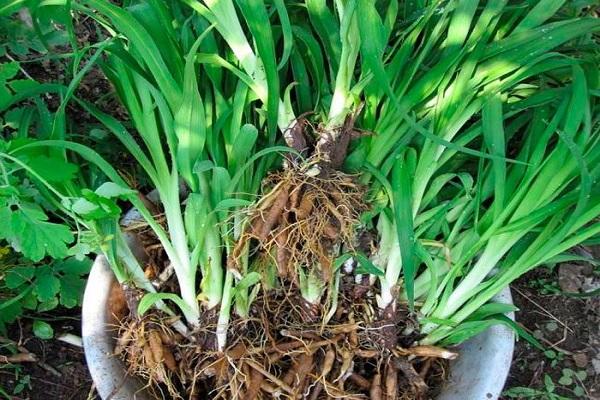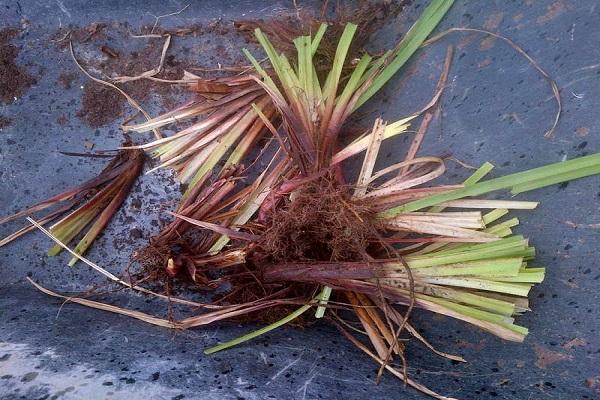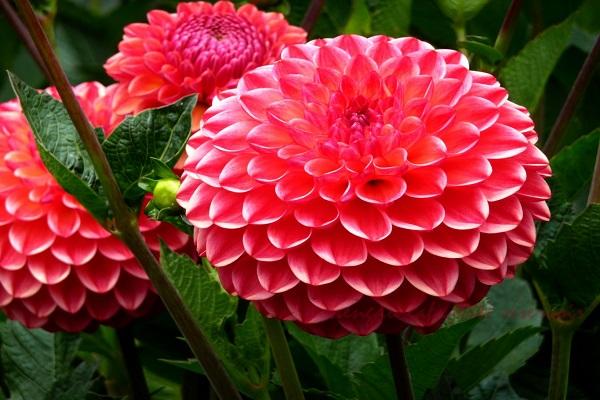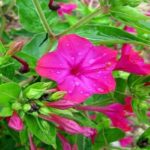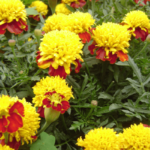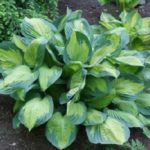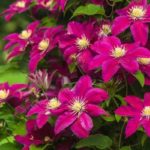Many gardeners grow not only common varieties of flowers, but also other, more exotic plants. Kniphofia, which is often found in African countries, is popular among gardeners. Before planting a flower, you need to understand the recommendations for planting and caring for kniphofia in open ground.
- Description and features
- Kinds
- Taka
- Yagodnaya
- Hybrid
- Varieties
- Dr. Kerr
- Orange Beauty
- Fire Flame
- Eskimo
- Abendzonne
- Cardinal
- Bernox Triumph
- Golden Skepter
- Indiana
- Royal Standard
- Prince Maurito
- Theo
- Rocket
- Kniphofia hybrida Fleming Torch
- Flamenco
- Makowana
- Surprise
- Alcazar
- African guest
- Bengal fire
- Fleming Torch
- Amazing fan
- Tukka
- Martian
- Cobra
- Atlanta
- How to grow seedlings
- Deadlines
- Preparing the soil, container and seed
- Sowing
- Temperature
- Watering and ventilation
- Dive
- Hardening
- How to plant
- Selecting a location
- Soil requirements
- Deadlines
- Planting scheme
- Care
- Watering
- Loosening and weeding
- Top dressing
- Mulching
- Preparing for winter
- Transfer
- Diseases and pests
- Leaf-eating pests
- Rot
- Reproduction
- Dividing the bush
- Seeds
- Combinations with other plants
- Use in landscape design
- Conclusion
Description and features
Kniphofia is a perennial plant that belongs to the group of evergreen flowers. Such seedlings are often used for landscaping flower beds. Therefore, with their help you can decorate the area, even if there are no flower stalks on the bushes yet. Kniphofia blooms in the twenties of July and stops blooming in September. The petals are brightly colored and can be yellow, orange or red.
Kinds
There are three varieties of kniphofia that are most often found in gardens.
Taka
This is a South African seedling that was discovered in the distant nineties of the nineteenth century. Taka is considered a tall plant, since the height of the seedlings is 80-100 centimeters. Taki's inflorescences are also rather large, their length is 10-15 cm. The petals on the buds are completely red and bloom in June.
Yagodnaya
Berry varieties of Kniphofia are considered the tallest; their bushes grow up to two and a half meters. The leaf blades are colored green, their length is 40-60 cm. Flowering of berry plants lasts 2-3 months.
Hybrid
Hybrid varieties of the flower have been created based on berry plants. Their distinctive features include disease resistance, long flowering and tall growth.Also, some hybrids are frost-resistant.
Varieties
Before planting kniphofia, you need to understand the characteristics of common varieties.
Dr. Kerr
This is a unique variety whose flower stalks grow up to a meter in length. At the same time, the height of the inflorescences is 25-30 cm. Dr. Kerr can be distinguished from other varieties by the bright colors of the petals, which have a lemon tint. The advantages of the variety include:
- long flowering;
- resistance to low temperatures;
- powerful stem.
Orange Beauty
A tall, two-meter variety, which is often planted in large flower beds. The leaves of Orange Beauty are huge, they grow up to fifty centimeters in length. The flower blooms in July and stops flowering after 60-70 days.
Fire Flame
Fire Flame, which has a unique fiery red color of the petals, is perfect for decorating the garden. The variety can be grown both in open ground and in greenhouses. The seedling, like many other varieties, begins to bloom in July.
Eskimo
A tall seedling that is often grown in flower gardens. A distinctive feature of Eskimo is that its flowers are arranged in two tiers. There are bright yellow buds below, and coral inflorescences on top.
Abendzonne
This is a plant with large flower stalks, which, when grown correctly, grow up to 25-30 centimeters. The seedling is very tall and therefore needs to be tied to supports. Abendzonne blooms at the end of June.
Cardinal
Another tall plant whose peduncle grows up to one and a half meters. To prevent the planted seedling from breaking due to strong winds, it is tied to support columns. Cardinal's buds are bright red.
Bernox Triumph
A low-growing seedling that can be grown in pots or boxes.The maximum height of this variety is only 45-55 centimeters. Bernox Triumph will bloom in June, flowering lasts a month and a half. The buds are orange with a golden tint.
Golden Skepter
This is a tall seedling that is only suitable for growing outdoors. The main stem grows up to 120-140 centimeters. In summer, large inflorescences appear on it, which become bright yellow during flowering.
Indiana
A medium-sized flower with a powerful stem that grows up to 80-90 cm. Among the advantages of Indiana is its resistance to temperature changes, diseases and pest attacks. During flowering, large orange flowers can be seen on the bushes.
Royal Standard
This is a fairly old variety, which is still popular among flower lovers today. Royal Standard is distinguished by medium-sized bushes, the stem of which grows up to 75-80 cm. The seedlings have lower flowers that are painted yellow, and the upper ones are bright red.
Prince Maurito
This is an unusual flower bush with large green leaves and a thick main stem. The main difference between Prince Maurito is the color of the inflorescences, which are brown. This variety blooms in the first half of July.
Theo
A medium-sized seedling that begins to bloom profusely after June 20-25. Teo's flowering lasts 1-2 months and ends before the onset of autumn cooling. The flowers of the variety are reddish in color with a faint orange tint.
Rocket
This is an exotic variety that is rarely found in the flower beds of summer residents. Rocket grows up to fifty centimeters, but sometimes the height of seedlings reaches a meter. The flowers of the seedling are small and have a reddish color. They bloom 1-2 months after planting in open ground.
Kniphofia hybrida Fleming Torch
This flower hybrid differs from most other kniphofia varieties in its compactness. Low seedlings can grow up to 55-65 centimeters. Thanks to this, some gardeners grow Fleming Torch in pots.
Flamenco
A tall flower, painted in red and yellow colors. Outwardly, Flamenco resembles brightly flaming torches. The flowering of the variety begins in mid-July and continues until the last days of September.
Makowana
A medium-sized flowering plant that grows up to 75 centimeters during the flowering period. At the same time, Makowan’s inflorescences grow up to 10-15 cm. The blooming buds are orange in color with a slight golden tint. Among the advantages of the variety is resistance to high humidity.
Surprise
This is a beautiful plant, the flowers of which are located in the upper and lower parts of the bush. The flowers located below are dark pink. The upper buds are brighter, as they are golden in color.
Alcazar
An exotic perennial flower, the bushes of which grow up to one hundred centimeters in height. This plant is not protected from frost and is therefore often grown in greenhouses. It blooms in July and blooms until the first days of September.
African guest
This tall variety attracts attention with the variety of its inflorescences. They differ from each other in their color. Some of them are painted pink or red. Burgundy buds with an orange tint are also common.
Bengal fire
A one and a half meter flower bush with small inflorescences of yellow, coral or burgundy color. The buds of Bengal fire are spike-shaped, their length is 15-20 cm.
Fleming Torch
A tall kniphofia, adult seedlings of which can grow up to two meters in height. The inflorescences of Fleming Torch are also long - 20-30 centimeters.The buds are yellowish in color with a reddish or orange tint.
Amazing fan
Another kniphofia, which belongs to tall plants. Its bushes reach one meter. At the beginning of summer, small flowers appear on the seedlings, which are colored red. After flowering, the buds lighten and turn yellow.
Tukka
People living in regions with unfavorable climates can plant the Tukka variety. This flower is resistant to low temperatures and high humidity. Active flowering begins in the first days of summer.
Martian
Perennial flower with a powerful root system. The Martian grows up to one and a half meters, the flowers are pinkish and have a red tint. This variety is heat-loving, and therefore it should be grown only in illuminated areas in the garden.
Cobra
This variety is suitable for people who are looking for late-blooming flowers. Cobra buds bloom in early August. Flowering continues until the first night frost.
Atlanta
A medium-sized kniphofia, which is often used when creating flower arrangements in a flower bed. Atlanta has large buds, colored orange. They bloom in summer and bloom until the end of August.
How to grow seedlings
Kniphofia is grown by seedlings, and therefore it is necessary to understand in advance the peculiarities of obtaining young seedlings.
Deadlines
It is necessary to figure out in advance when it is better to plant seed for further growing flower seedlings. Experienced flower growers recommend planting on the twentieth of March. Kniphofia should not be planted earlier.
Preparing the soil, container and seed
Plastic pots are used for planting seeds and growing flowers. Holes are made in them in advance so that a lot of moisture does not accumulate inside the container.Then a soil mixture made from turf soil, sand and peat is poured into the prepared pots.
After preparing the containers and soil mixture, they prepare the seeds. They are pre-disinfected in manganese liquid and washed with water.
Sowing
Sowing kniphofia seeds is quite simple. To do this, holes are made in containers filled with soil. The depth of each of them should be 10-12 millimeters. One seed is planted in each hole. After planting, it is covered with soil and watered with water.
Temperature
Before the first shoots appear, you need to monitor the temperature. Experts advise germinating seeds in rooms where the temperature is at twenty degrees. If temperatures drop below 15 degrees, seedlings will germinate slowly.
Watering and ventilation
The development of seedlings is affected by the amount of watering. Young Kniphofia seedlings need to be watered frequently, but each bush requires 300-450 milliliters of water. It is impossible to over-moisten the soil, as this promotes the development of diseases. The plant also needs to be ventilated regularly.
Dive
When the first true leaves appear on the planted bushes, begin picking. During the procedure, the seedlings are planted in separate pots.
Hardening
In order for the flower to get used to temperature changes outside, it is necessary to harden it. To do this, young plants are taken out of the room and outside for a day. You need to do hardening two weeks before transplantation.
How to plant
It is necessary to familiarize yourself with the peculiarities of planting kniphofia in order to plant it correctly.
Selecting a location
When choosing a suitable place for an African flower, you need to pay attention to the level of illumination, since the development of the young seedling depends on it.Experts advise planting the flower in a lighted part of the garden that is not shaded by tall plants.
Soil requirements
Also, the development of bushes depends on the soil in which they grow. It is necessary to transplant seedlings into sandy and loose soil, as it allows moisture to pass through better. Moreover, before planting, it must be fed and saturated with nutritional components.
Deadlines
Seedlings are transplanted into open ground when the air temperature increases to 10-15 degrees. Therefore, you should not plant before May or the end of April.
Planting scheme
In order for the planted flowers to grow and bloom normally, you need to familiarize yourself with the planting scheme in advance. Holes for seedlings are dug at a distance of 20-35 centimeters so that the flowers do not shade each other. The depth of each hole is 5-8 centimeters.
Care
Kniphofia requires proper care, and therefore you will have to familiarize yourself with how to care for it.
Watering
Even though it is a drought-tolerant perennial, it still needs to be watered regularly. They irrigate twice a week, and little water is spent on each bush. You cannot flood flowers, as this negatively affects flowering.
Loosening and weeding
When growing kniphofia, they must do weeding and loosening. This helps get rid of weeds and thick crusts that may have formed on the surface of the soil.
Top dressing
Without a sufficient amount of nutritional components in the soil, the plant will grow worse, and therefore periodically fertilize. Seedlings are fed with mineral fertilizers and organic matter.
Mulching
To prevent moisture in the soil from evaporating longer, the area is mulched.To do this, a mulch layer of sawdust, peat or wood twigs is placed near the flowers.
Preparing for winter
In the fall, the arrows that have already bloomed must be cut off. In winter, flowers cannot be stored without additional protection from frost, and therefore a shelter is made. Plants are covered with plastic film or roofing felt.
Transfer
Once every 2-3 years, flowers need to be transplanted to a new place. To do this, adult bushes are carefully dug up with a shovel and transplanted to another well-lit place in the garden.
Diseases and pests
There are dangerous diseases and pests that Kniphofia suffers from.
Leaf-eating pests
Most often, leaf-eating insects appear on seedlings. To preserve the plant and get rid of pests, you need to spray the flowers with insecticides.
Rot
The most dangerous disease is considered to be root rot, which develops due to waterlogging of the soil. Affected bushes must be destroyed immediately so that the disease does not spread to neighboring flowers.
Reproduction
There are two methods of propagating kniphofia.
Dividing the bush
When dividing a bush, in early May, the parent seedling is dug up, from which the daughter rosettes are separated. The separated parts of the plant are dried and planted in the ground.
Seeds
Most gardeners propagate bushes using seeds. To do this, ripe seeds are collected from the bush in early autumn. Then they are stored until spring and planted for seedling germination.
Combinations with other plants
Experts recommend planting the African flower next to the following plants:
- dahlias;
- sage;
- cereals;
- irises;
- peony.
Use in landscape design
Florists and flower growers advise planting kniphofia along with other large flowers.Such plantings look best near ponds, on mixed lawns and flower beds.
Conclusion
Lovers of exotic flowers often plant kniphofia in their gardens. Before planting such a flower, it is better to familiarize yourself with the varieties of varieties and recommendations for growing.

